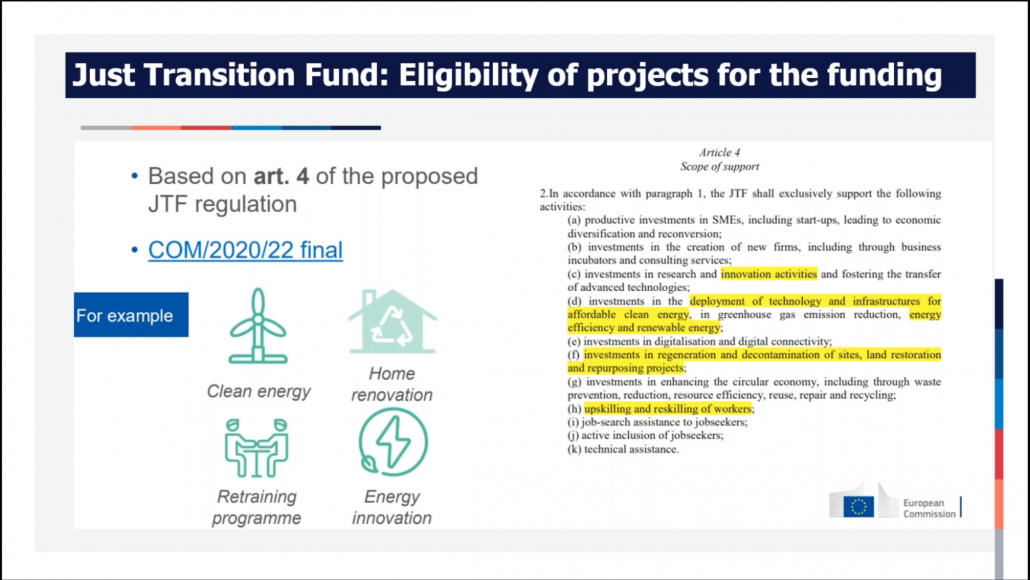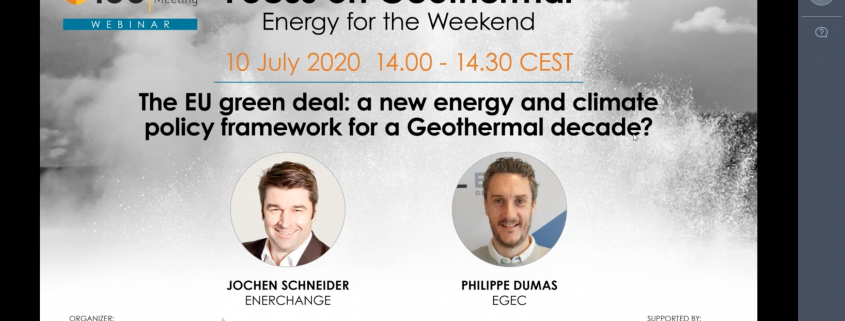The EU green deal: a new energy and climate policy framework for a Geothermal decade?
On 10 July 2020, EGEC hosted an IGN online meeting on geothermal energy’s place in the new EU Green Deal Framework. The discussion was mainly centered around the idea that the new decade will be a Geothermal Decade. To back up this claim, Philip Dumas (EGEC’s Secretary) first exposed the growing relevance of geothermal in the current EU energy market. The push toward climate neutrality by 2050 together with an increasing number of renewable energy sources will call for smart management of the energy load and baseload energy to ensure constant levels of electricity throughout the day while fluctuating energy sources such as wind, hydro and solar can rapidly respond to a spike or a decrease in energy demand. According to experts, geothermal energy can serve as baseload energy sources as its energy output is constant throughout the day and available 24/7. In addition, geothermal energy can provide both heating and cooling which represent 64.4% of the energy consumption of an average EU household.
The current COVID-19 pandemic has showcased the urgent need for green recovery in Europe and beyond. As such, Phillipe Dumas exposed several current and forthcoming EU funding schemes that will be suited for Geothermal Energy (exploration, drilling and operation) together with EU initiatives for green development as part of both the Green Recovery and the surrounding European Green Deal.

- Clean Energy for EU Islands: The Clean Energy for EU Islands Secretariat is an initiative on behalf of the European Commission aimed at catalysing the clean energy transition on EU Islands. European islands often face significant challenges when it comes to energy supply and energy costs. Due to geographic location, small economies of scale, and limited or absent interconnection to the mainland or to other islands, many islands are still heavily dependent upon costly imported fossil fuels to generate electricity or to meet their heating and cooling needs. Unlike other intermittent energy sources, geothermal energy could provide a stable, sustainable, and affordable energy supply for a wide variety of potential uses that are not restricted to electricity generation but encompass many types of direct uses.
- Coal Region Transition under the framework of the Just Transition: Geothermal energy is in many ways similar to conventional extractive industries such as mining for minerals. It requires extensive understanding of geological formations to identify possible production sites. The equipment and know-how for developing a geothermal production closely resembles those for conventional drilling. Geothermal projects are not comparable to mining jobs, which are steady on the same site for decades, but a thorough industrial strategy to promote geothermal heat and power production can contribute to the solution with the development of many smaller projects over long periods in a same region, and ad-hoc industries like tourism, agro-industry, and balneology. By contributing to reducing energy poverty and improving quality of life: coal regions tend to be characterized by a high prevalence of energy poverty due to low building quality and low income for a large swath of the population. By replacing coal for home heating, and with no air-emissions, geothermal is a solution for improving air quality in cities.
- Just Transition Fund: The European Union is committed in becoming the first climate-neutral bloc in the world by 2050. This requires significant investment from both the EU and the national public sector, as well as the private sector. The European Green Deal’s Investment Plan – the Sustainable Europe Investment Plan – will mobilise public investment and help to unlock private funds through EU financial instruments, notably InvestEU, which would lead to at least €1 trillion of investments.
- The Innovation Fund: an European Financing programme that stems from the EU ETS, which aims to invest part of the revenues from the European carbon trading scheme to the development of innovative clean energy technologies. The Innovation Fund does not restrict any innovative first-of-a-kind technology, provided its demonstration leads to material avoidance of GHG emissions, it has the potential for widespread application or to significantly lower the costs of transitioning towards a low-carbon economy in the covered sectors.

